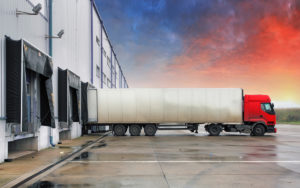
Land transport of goods includes all means of transport that uses routes such as roads, highways, express roads or railways.
It is the most economical and flexible means of transport especially when we are talking about nearby or relatively close countries. In fact, according to data from Eurostat (European Statistics Office), most of the land transport by road (about 90% of the total), ranges from 50 to 1,999 kilometers. The distance bands that have increased the most in recent years are the routes of 300 to 499 kilometers and 1,000 to 1,999 kilometers.
However, today it is also possible to transport goods over long distances by land efficiently. In Europe we have a spectacular road network of thousands of kilometers and interconnected railroads. However that said, there is still a lot to do.
Land transport in addition to being a complete means of transport has the characteristic that it is part of the logistics chain that can combine with other types of transport. It can combine with air or sea completing the circle so that the goods reach their destination. Road transport remains king for the transport of goods over land, especially since it is the most frequently used method by importers and exporters . . . Even more than rail. The data itself reflects this: according to ACEA (European Association of Automobile Manufacturers) every day around 6 million trucks travel the roads of the European Union.
What is the land freight transport?
Land transport of goods includes rail transport and road transport.
Road transport is mainly used in short and medium distances although it is also capable of covering long distances. It is faster, autonomous and more efficient than rail although it is more limited and has a higher accident rate.
Rail transport is used particularly in the transport of goods at medium or long distances. It is slower than the road and needs infrastructure but it is also an economic means that allows to transport any type of merchandise without having the inconveniences of traffic and accidents. It is also more respectful to the environment.
So, these are the various types of cargo loading in road transport:
- Groupage: This is when the merchandise of a single customer is not going to occupy the full load of a truck. The groupage or the mode of fractional or combined load is used. In this way the load of the truck will be formed by the merchandise of several different customers who want to move their products to any other part of the world. It can be parcel or pallet, as well as other types of packaging and dimensions. It is more cost effective as it is only quotes for the space occupied by the merchandise of each unit in the truck.
- Full load: When you want to fill a full container the full load is used. In this case the goods will go directly to the destination so the delivery time is reduced while the costs increase.
- Express transport: In this case, the urgent merchandise goes in groupage mode but is delivered first, so its cost is higher than in the case of conventional groupage.
- Special transport: This is the transport of dangerous goods, tanks for liquid goods, refrigerated transport, chemicals etc.
Advantages & Disadvantages of Land Transport
Land transport is the most used type of transport in the world particularly the transport of goods by road.
Advantages of Land Transport
- Economic. Unlike other means of transport, such as air transport, land transport is less expensive. In the case of road transport does not require specific infrastructure.
- Flexible. Allows maximum flexibility of collections and deliveries, with schedules, frequencies and other facilities.
- Controllable. It has technology that makes it possible to control where the merchandise is at all times.
- Insurance. Thanks to the existing regulation and the professionalism of the transporters, fewer and fewer accidents occur especially when we talk about road transport.
- Accessible. It reaches points that would not be achievable for other means of transport.
- Quick. It allows covering both short and long distances in a shorter time than other means such as maratime.
- Versatile. It allows transporting all types of merchandise (dangerous, liquid, perishable products) and can be combined with other means of transport to complete the logistics process at 100%.
Disadvantages of Land Transport
- Accident rate. The loss ratio is higher than other means of transport.
- Distance. It covers less distances than other means such as the airplane and along the route it must cross borders with its consequent delays and paperwork.
- Pollution. Although it is true that every time there are major advances in this type of transport (electric motors, energy combustion beyond diesel, autonomous vehicles, etc.), the reality is that land transport is still one of the most polluting means of moving goods.
- Traffic is difficult to predict which means that there may be delays and more incidents may be recorded along the route.
- Capacity. Especially in road transport is more limited than in the case of air or sea transport.
In which cases is it advisable to choose land transport?
Land transport is very versatile and offers the possibility of moving virtually all types of goods, except large ones. Therefore it is the ideal means of transport for the following goods:
- Urgent
- Perishable products (food, plants and flowers)
- Live animals
- Varied package
- Liquid products
- Hazardous materials (nitrogen and fuel)
- Refrigerated products
- Vehicles
- Textile materials and accessories
- Materials for construction (cement, bricks, glass and granite)
- Mineral raw materials

Leave a Reply